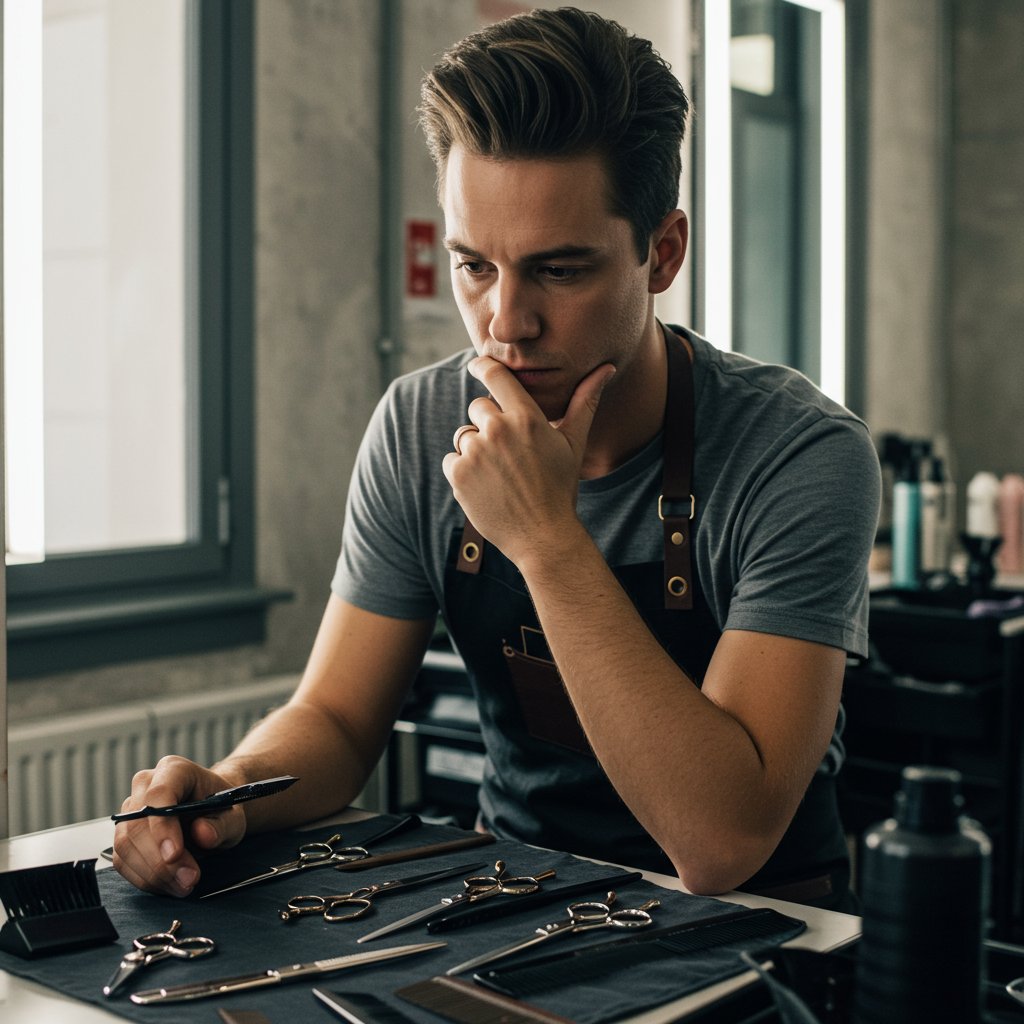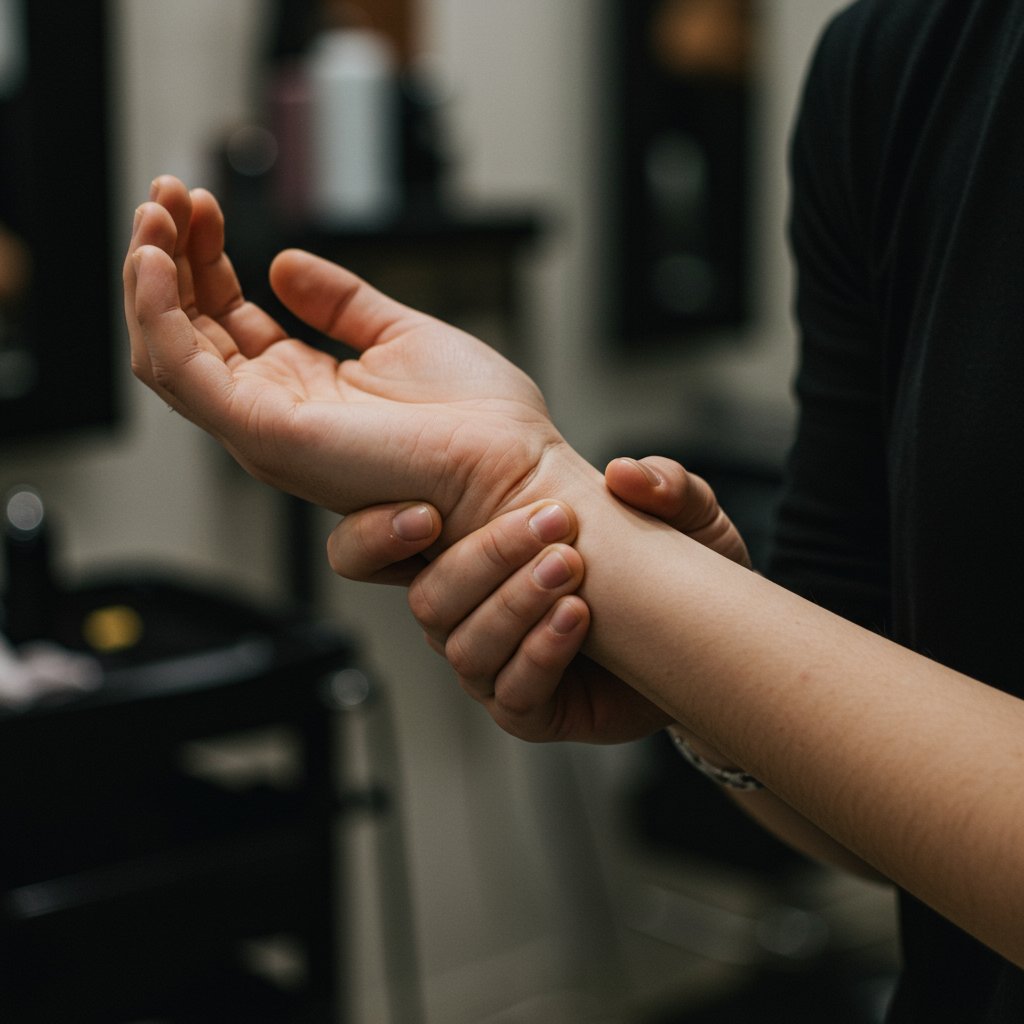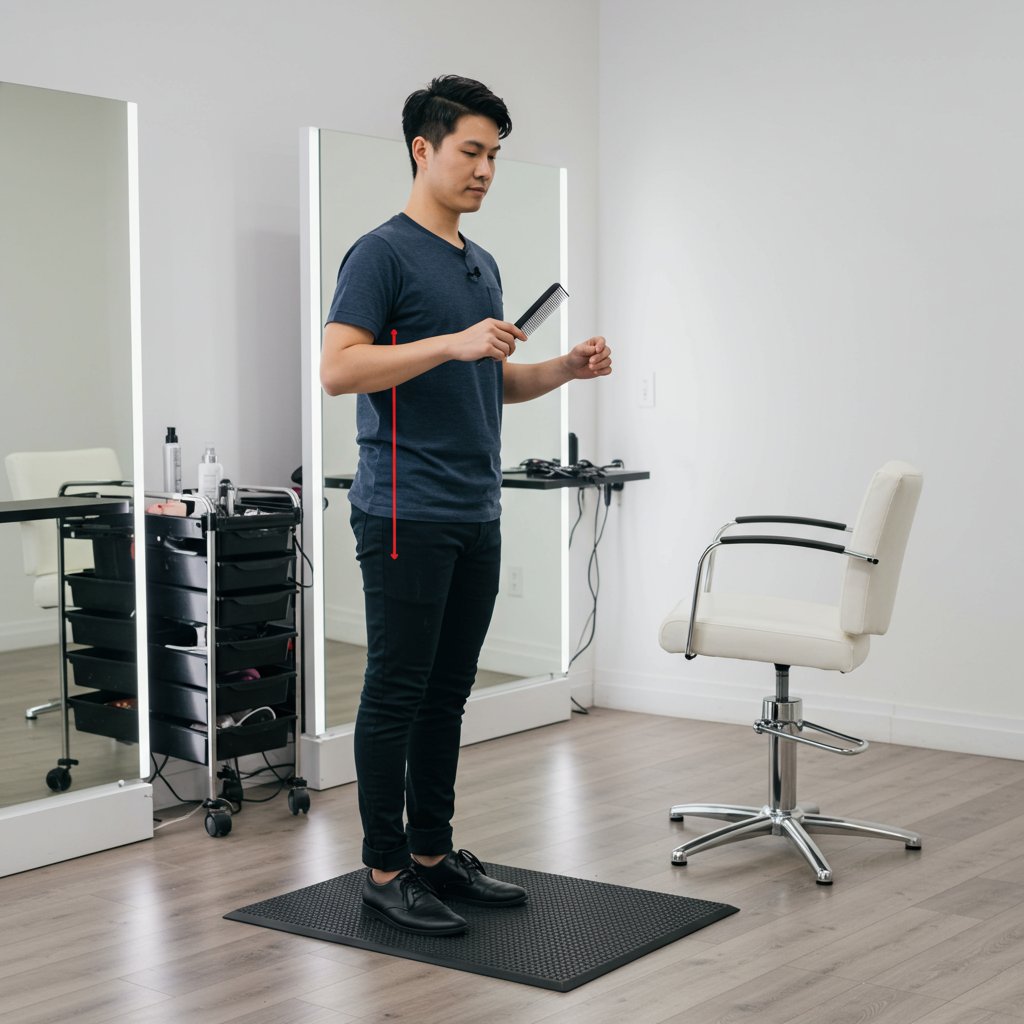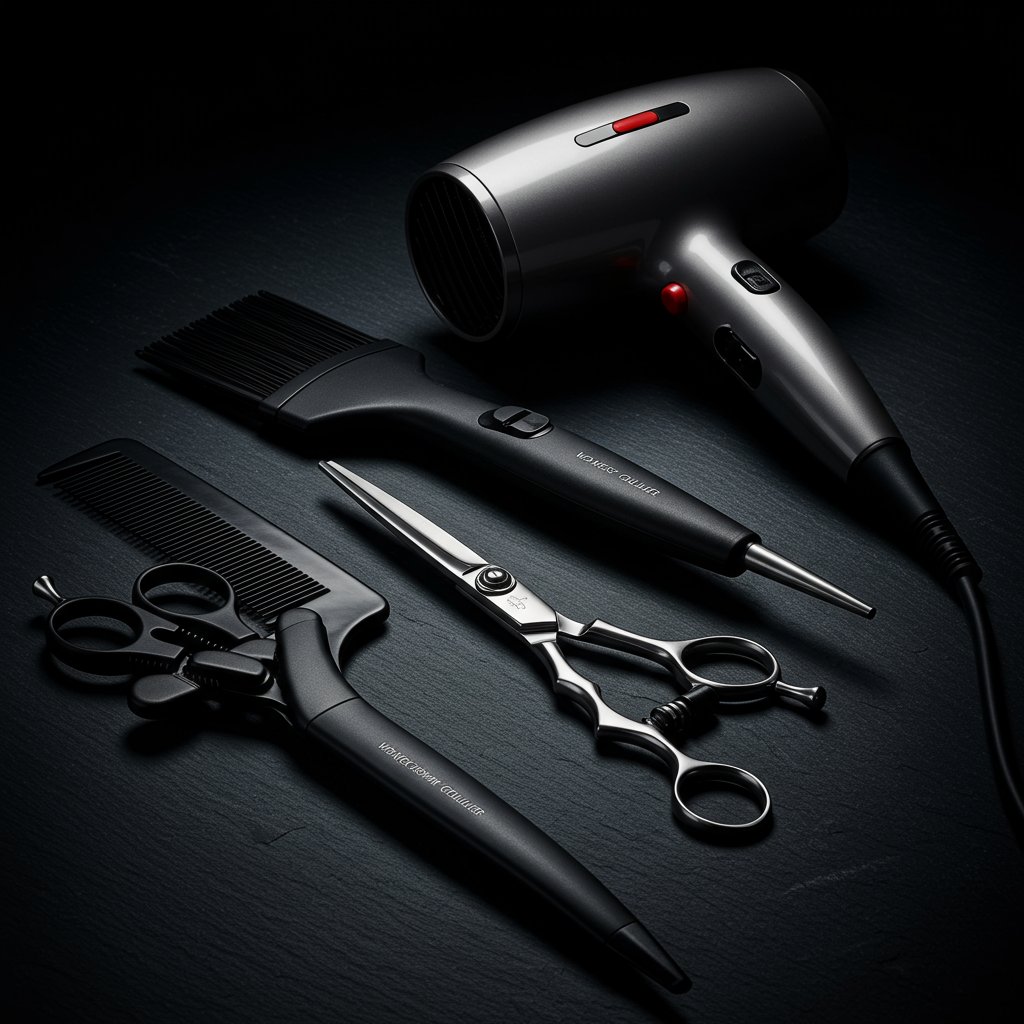The Art of Longevity: Why Ergonomics for Stylists is Non-Negotiable
The life of a hairstylist is a dynamic blend of artistry, technical skill, and deep personal connection. It's a physically demanding profession that requires standing for hours, performing repetitive motions, and holding awkward positions to create the perfect look. While passion fuels the craft, the physical toll can lead to chronic pain, debilitating injuries, and ultimately, burnout. This is where the science of ergonomics for stylists becomes the most critical tool in your kit. It’s not about limiting creativity; it’s about empowering you to sustain your passion for a lifetime. By understanding and implementing ergonomic principles, you can protect your body, enhance your efficiency, and build a resilient, long-lasting career.

Ergonomics is the practice of designing your workspace and workflows to fit your body's capabilities and limitations. For a stylist, this means analyzing everything from the way you hold your shears to the height of your client’s chair and the shoes on your feet. Ignoring these principles is a silent threat. It starts as a minor ache in the wrist or a stiff neck at the end of the day, but over time, these small discomforts can escalate into serious conditions like carpal tunnel syndrome, tendonitis, or chronic back pain. This guide is your comprehensive roadmap to integrating smart ergonomic practices into every aspect of your work, ensuring your body is as well-cared-for as your clients' hair.
The Hidden Toll: Understanding Common Stylist Injuries
To effectively prevent injury, it's crucial to understand the specific risks stylists face. The repetitive, precise movements inherent in cutting, coloring, and styling place unique strains on the musculoskeletal system. Over time, this micro-trauma accumulates, leading to inflammation, pain, and reduced mobility. Recognizing the early signs of these common ailments is the first step toward intervention and prevention. The mantra 'no pain, no gain' has no place in a healthy salon career; instead, it should be 'no pain, all gain'—gaining a longer, more comfortable professional life.

Some of the most prevalent injuries among hair professionals include Carpal Tunnel Syndrome, a painful condition caused by compression of the median nerve in the wrist, often from repetitive gripping and awkward wrist angles during cutting. Tendonitis in the wrist, elbow ('tennis elbow'), and shoulder is also common, resulting from inflammation of the tendons due to overuse. Furthermore, chronic lower back pain is a near-universal complaint, stemming from hours of standing, often with poor posture and inadequate foot support. Neck and shoulder pain, frequently caused by hunching over clients or holding a blow dryer at an awkward angle, can lead to tension headaches and severe muscle strain. Understanding these specific vulnerabilities allows you to target your ergonomic efforts effectively.
The Foundation: Mastering Your Posture and Stance
Your body is your primary instrument, and proper posture is the foundation of all ergonomic practice. How you stand and position yourself throughout the day dictates the amount of stress placed on your joints, muscles, and spine. Mastering a neutral, balanced stance is a game-changer that can dramatically reduce fatigue and prevent long-term damage. It requires conscious effort initially, but with practice, good posture becomes second nature, creating a stable base for all your creative work.
The Power of the Feet
Your connection to the ground is paramount. Start with supportive, well-cushioned footwear with good arch support—this is not the place to prioritize fashion over function. Standing on a hard floor all day sends shockwaves up your legs and into your spine. An anti-fatigue mat is an essential investment. These mats are specifically designed to encourage subtle movements in your leg muscles, which promotes blood flow and reduces pressure on your feet, knees, and lower back.
Aligning Your Spine
Think of a string pulling you up from the crown of your head. Your ears should align over your shoulders, shoulders over your hips, and hips over your ankles. Engage your core muscles to support your lower back. Avoid hunching or leaning forward. When you need to get lower, bend at your knees and hips, not your waist. This keeps your spine in a neutral position and places the workload on your strong leg muscles instead of your vulnerable back.
The Adjustable Chair Advantage
One of the most significant ergonomic tools is the hydraulic styling chair. Use it to your full advantage. Instead of contorting your body to fit the client, adjust the client's height to fit your ideal working position. For most tasks, the area you're working on should be at your elbow height. This simple adjustment prevents you from raising your arms and shoulders or hunching your back, significantly reducing strain throughout the day.
Your Tools, Your Lifeline: Choosing Ergonomic Equipment
The tools you hold for hours every day can either be a source of strain or an extension of a healthy hand. Investing in high-quality, ergonomically designed equipment is not a luxury; it's a critical component of career preservation. The right tools are designed to work with the natural position and movement of your body, reducing the force, repetition, and awkward postures that lead to injury.
The Shear Truth
Your shears are the most-used tool in your arsenal. Look for shears with an offset or crane handle design, which allows you to work with a more open hand and a lower elbow position, reducing shoulder strain. A swivel thumb ring is a revolutionary feature for many stylists, as it allows for greater freedom of movement and enables you to keep your wrist in a straight, neutral position during complex cuts. Material also matters; lighter-weight shears made from high-quality steel reduce the overall load on your hand and wrist muscles.
Blow Dryer Dynamics
Holding a heavy, unbalanced blow dryer at arm's length is a recipe for shoulder and neck pain. Modern ergonomic dryers are incredibly lightweight without sacrificing power. Look for models with a balanced design, where the weight is distributed evenly to reduce torque on your wrist. A dryer with multiple heat and speed settings also allows you to use the minimum force necessary, and a long cord provides the flexibility to move around the client without straining.
The Art of Conscious Movement: Techniques to Reduce Strain
Ergonomics isn't just about static posture or the tools you use; it's also about how you move. By adopting more mindful and efficient movements, you can minimize unnecessary stress on your body. This involves rethinking long-held habits and approaching each action—from cutting to blow-drying—with the goal of physical preservation.
Working Smarter, Not Harder
Instead of twisting your body or reaching awkwardly, move your feet. Walk around the client to access different angles. Use the swivel feature of the styling chair to bring the section you're working on directly in front of you. When cutting, take a moment to step back and assess your work rather than leaning in for extended periods. These small adjustments in movement prevent static muscle loading and reduce overall fatigue.
Wrist-Saving Cutting Techniques
Pay close attention to your wrist position while cutting. Avoid bending your wrist up (extension) or down (flexion) at extreme angles. This is a primary cause of carpal tunnel syndrome. Practice techniques that allow you to keep your wrist as straight as possible. This is where ergonomic shears, particularly those with a swivel thumb, can make a profound difference, as they accommodate a neutral wrist posture.
The Essential Reset: Stretches and Exercises for Daily Relief
Even with perfect posture and tools, the repetitive nature of styling will cause muscle tension. Incorporating regular stretching and simple exercises into your day is like performing preventative maintenance on your body. These movements counteract the static and repetitive postures of your job, improving circulation, increasing flexibility, and releasing built-up tension before it becomes a chronic problem.
Hand and Wrist Savers
Between clients, take 60 seconds to care for your hands. Gently bend your wrist up and down, holding for 15 seconds in each direction. Spread your fingers wide and then make a tight fist, repeating several times. The 'prayer stretch' is also excellent: press your palms together in front of your chest and slowly lower your hands toward your waistline until you feel a gentle stretch in your forearms.
Shoulder and Neck Release
Combat the inevitable shoulder hunch with simple releases. Gently roll your shoulders up toward your ears, then backward and down, repeating 5-10 times. Slowly tilt your head from side to side, holding each stretch for 15-20 seconds to release neck tension. Avoid rolling your head in a full circle, as this can compress the vertebrae in your neck.
Beyond the Physical: Mental Ergonomics and Burnout Prevention
True ergonomic health extends beyond the physical. The constant social engagement, emotional labor, and pressure to perform creatively can lead to significant mental and emotional fatigue, a key driver of burnout. Mental ergonomics involves designing your work habits and environment to protect your mental well-being, ensuring your passion for the craft doesn't wane.
Setting Boundaries and Managing Time
Protect your energy by structuring your day effectively. Ensure you have adequate time scheduled for each client to avoid rushing, which increases both physical and mental stress. Learn to politely set boundaries with clients regarding service expectations and personal conversations. It's also crucial to schedule genuine breaks away from your station. Step outside for fresh air, eat a nourishing meal without distraction, and give your mind a chance to reset.
The Power of Mindfulness
In a profession that demands constant focus on others, it's easy to lose touch with your own state of being. Practice mindfulness by taking a few deep, intentional breaths between appointments. Check in with your body: Is your jaw clenched? Are your shoulders creeping up to your ears? This brief moment of self-awareness can help you release tension before it builds. Cultivating a mindful approach helps you stay present and reduces the cumulative effect of daily stressors, fostering a more sustainable and enjoyable career path.
Quick Tips for a Healthier Styling Career
- Invest in Quality Footwear: Prioritize support and cushion over style. Your feet are your foundation.
- Use an Anti-Fatigue Mat: This is a non-negotiable tool for reducing leg and back pain.
- Adjust the Chair: Always bring the client to your ideal working height.
- Choose Lightweight Tools: Every ounce matters when you're holding a tool for hours.
- Keep Wrists Neutral: Be mindful of your wrist angle when cutting and styling.
- Move Your Feet: Don't twist your body. Walk around the chair.
- Stretch Regularly: Take 1-2 minute stretch breaks between every client.
- Stay Hydrated: Proper hydration is crucial for muscle and joint health.
- Take Your Breaks: Step away from your station to rest your body and mind.
- Listen to Your Body: Address pain early. Don't push through it.
Frequently Asked Questions (FAQ)
What are the first signs of an ergonomic injury for a stylist?
Early signs often include tingling or numbness in the hands or fingers (especially at night), a dull ache in the wrist or shoulder, muscle tightness in the neck, and persistent lower back pain after a workday. Don't ignore these signals; they are your body's early warning system.
Are expensive ergonomic scissors really worth the investment?
Absolutely. While the initial cost may be higher, high-quality ergonomic shears are an investment in your career longevity. They are designed to reduce strain, which can prevent costly medical bills and lost workdays down the line. Consider them essential personal protective equipment.
How often should I be stretching during the workday?
Ideally, you should perform a few quick stretches between every single client. This only takes 1-2 minutes but makes a massive difference in preventing muscle tension and fatigue from accumulating throughout the day.
What is the single most important ergonomic change a stylist can make?
While it's a holistic practice, the most impactful change for many is consistently using the hydraulic chair to adjust the client's height. This single habit prevents hunching and reaching, protecting your entire back, neck, and shoulder complex from the most common sources of strain.
How can I address ergonomics if my salon doesn't provide anti-fatigue mats or other equipment?
Start a constructive conversation with salon management. Frame it as an investment in stylist health, which leads to fewer sick days and higher productivity. You can also personally invest in your own high-quality footwear and shears, as these are within your direct control.
Conclusion: Your Career is a Marathon, Not a Sprint
Embracing ergonomics is the most profound act of self-care a stylist can perform for their career. It is a conscious shift from enduring the physical demands of the job to proactively managing them. By integrating proper posture, mindful movement, supportive tools, and essential self-care rituals into your daily routine, you are not just preventing injury—you are investing in your future. You are ensuring that your passion for hair artistry can be a source of joy and fulfillment for decades to come. Take these principles to heart, apply them diligently, and build a career that is as healthy and enduring as it is beautiful.
















